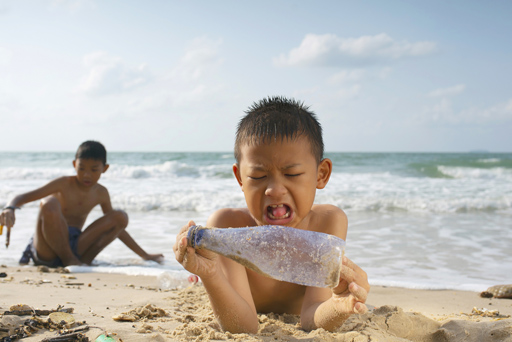5 Plastic childhoods
While climate change – its impact on the earth’s temperature and the subsequent consequences of that – has been the focus of protests by young activists such as Greta Thunberg, other young people have focused their protests and campaigns on other forms of environmental damage.
An obvious example of environmental damage is the use of single-use plastics by richer countries of the world. Images of marine life swallowing and choking on plastics have been hugely influential and have come to symbolise the damage done to the ocean environment by human carelessness and poor stewardship of the natural world. These have drawn significant responses from young people. In India, for example, 14-year-old student Aditya Mukarji launched a campaign against plastic straws after seeing a video of two vets trying to remove a plastic straw from a turtle’s nose. Since 2018 when he first started to campaign, Aditya has helped replace more than 500,000 plastic straws in restaurants and hotels.
In the next activity you will explore the impact of plastics on children’s lives in more detail.

Activity 8
a.
Plastics can be used both negatively and positively in children’s lives
b.
The project used many different methods, including biological sampling and social media
c.
Plastics pose no risk to children
d.
Plastics, and their impacts on the environment, are a source of concern to many children.
The correct answer is c.
While many of us might have a rather simplistic reaction to the idea of plastic childhoods – and think about the large amount of plastic waste we accumulated as children or our children accumulate – Kraftl’s work goes beyond this. He looks at the ways ‘micro’ plastics enter children’s bodies as well as how the ‘macro’ plastic waste in the ocean affects children. His work draws on human geography, anthropology and sociology, and also on children’s own views and ideas and the ways they differentiate between good and bad plastic.
